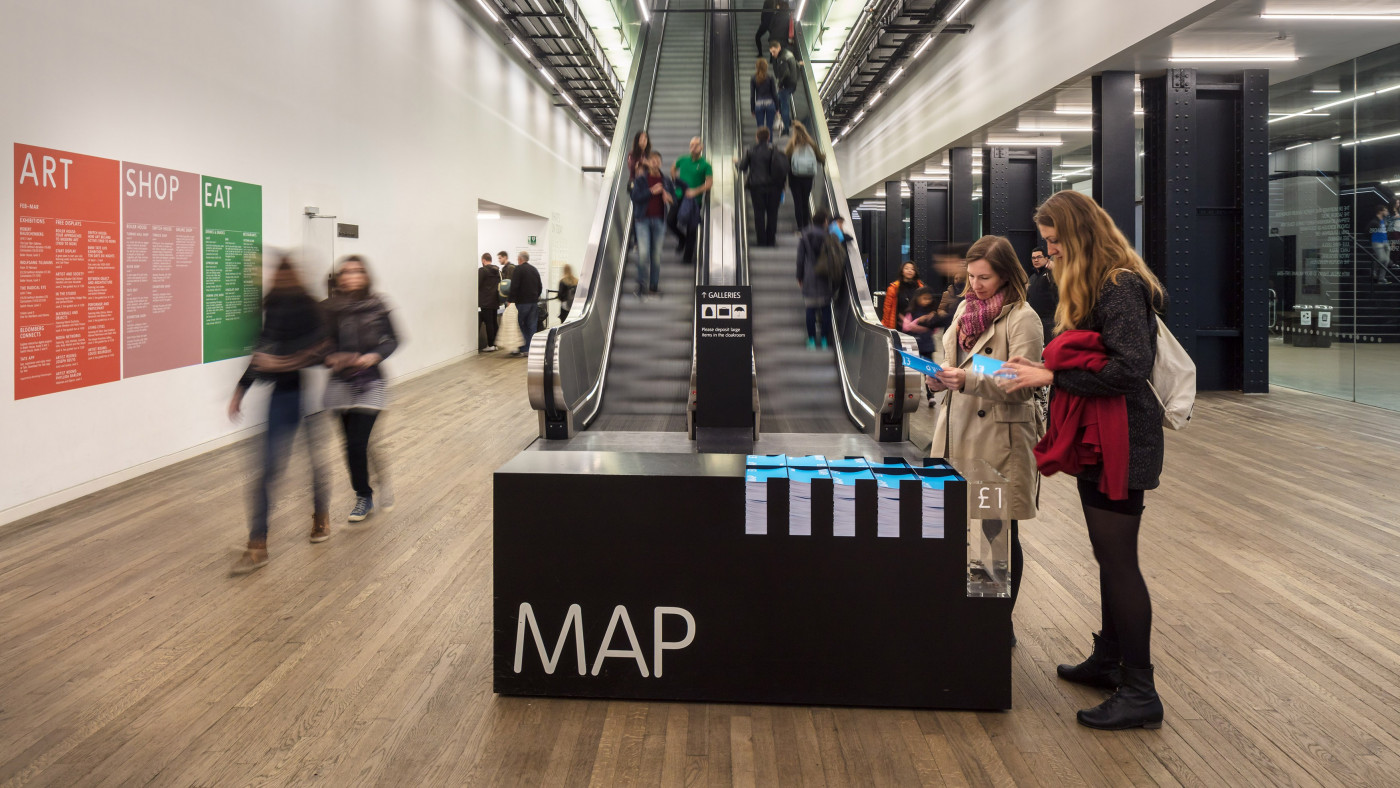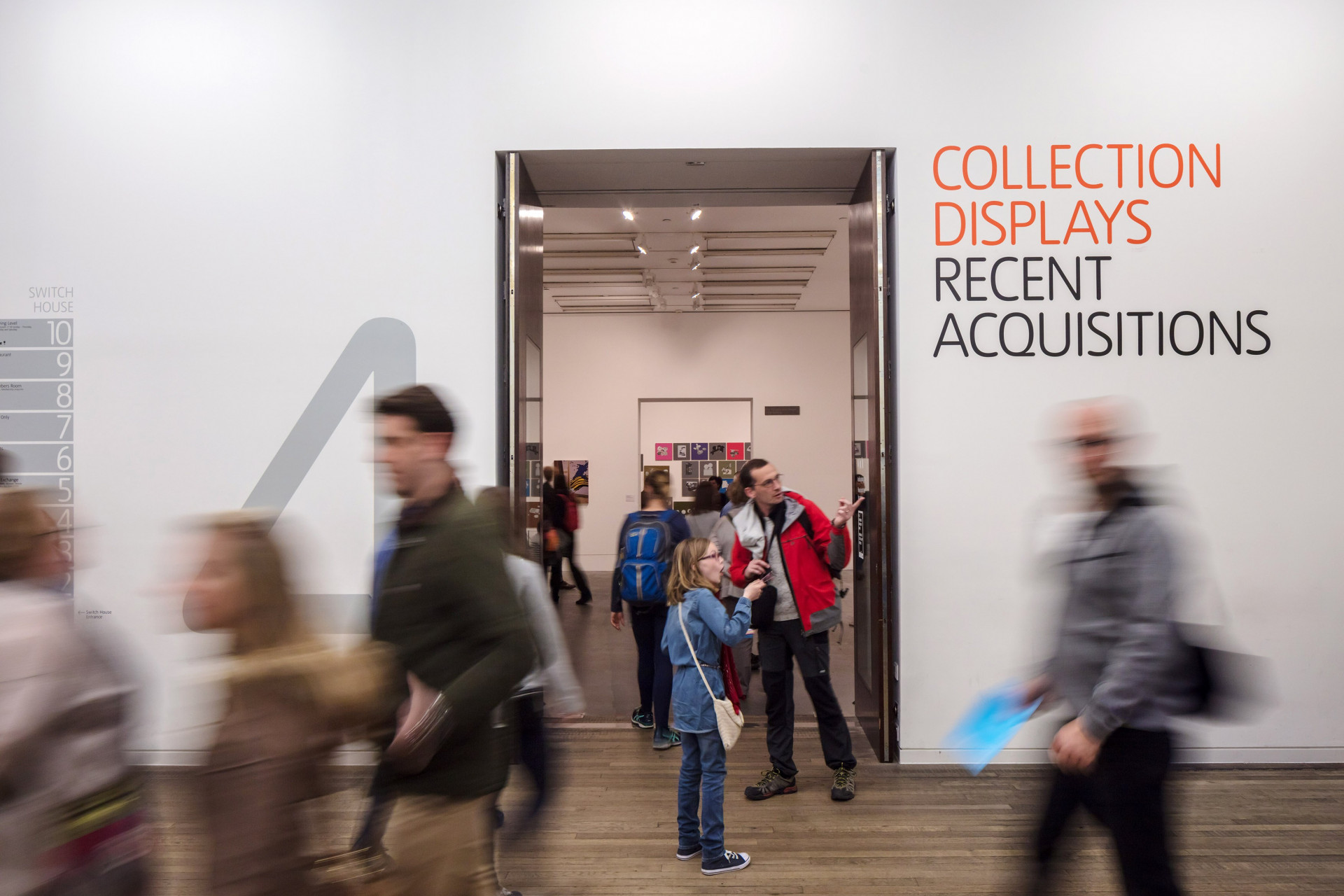Addressing the visitor experience
It’s clear that social distancing will need to be actively enforced for some time yet. Like we’ve seen in large retail stores (especially supermarkets) over the last few months, routing systems and a ‘one in, one out’ policies are also firmly in place – albeit with varying degrees of success – and could work in museums and galleries too.
However, while consumers are more prone to getting through their daily shop as quickly as possible, museum and gallery-goers don’t tend to be in any hurry.
Prescribed routes aren’t always effective and in large art galleries – like the Tate Modern or the National Gallery – urging people to visit in this way would take far too long – and not create the memorable experience which these institutions want. The other challenge is people often come to see a specific exhibit, so forcing them to see the whole gallery would disrupt their individual experience.
A queuing system between different gallery areas could work, but again, it’s not an ideal scenario for visitors.
Putting Systems In Place
The knock-on effect of needing to provide more personal space inside buildings and venues is likely to lead to a rise in ticketing and staggering entry times throughout the day – which may even mean galleries and museums are open later. However, this will also mean that more casual visitors looking to ‘drop-in’ won’t be able to do so: at least in the short term.
Signage is another big concern. Displaying factual information and ensuring social distancing markers are clearly labelled is one thing. But keeping them ‘on brand’ or consistent with situational aesthetics in a way that complements the environment is quite another. No one wants to see ugly red floor stickers in a listed building or a modern gallery – but this may well be the trade-off for having access to them once again.
Also, more pre-planning will be needed; putting greater emphasis on the use of digital guides, apps, and other assets to help visitors get acquainted with different areas and informing them of upheld policies before they arrive – identifying what they should expect and reassuring them that the right measures are in place.
Online Accessibility
One other area in which digital media will have – and is already having – an impact in the cultural sector is the concept of making exhibits available online.
The National Theatre is already broadcasting plays online for free. The advantage here is that it opens up the arts to more people; which could then inspire a new audience to engage with them in a more accessible (less elitist) way – something that will also be beneficial when things return to normal.
In addition, initiatives like these will also help to drive awareness of both specific exhibits and what individual institutions have to offer, and will also shed light on how they operate – and what people can expect when they visit in person.
Adjusting Is Easier Than We Think
From navigation to signage, as well as guides, resources, and apps – there are many ways in which wayfinding can improve the overall visitor experience in a post-lockdown world.
While the prospect of making necessary adjustments may seem daunting at first for many, the need to uphold public safety and prevent crowding in public spaces is not to be taken lightly.
As a society, we’re more equipped to deal with change than we might think. Consider how much more stringent security checks at airports and public events have become in the past 20 years. Or how contactless payment has taken root for day-to-day transactions.
These simple, yet, effective practices have become easily integrated into our realities. And, with the right rollout plan in place, there’s no reason why any new COVID-related measures won’t be adopted easily.
To some extent, it seems as though we may need to accept that our favourite cultural institutions will operate differently; and adjust our tolerance for public safety-focused signage in historic buildings and modern galleries. But if they help these institutions open their doors once again – and maximise revenue – surely we can overlook them?
Whatever measures are brought in, they are critical in bringing cultural institutions back to life. While organisations like the Museums Association have plans in place to help kickstart the sector, according to reports, one in ten museum staff expects their institutions to close.
It doesn’t have to be this way.
Looking for advice on how your cultural building can comply with current COVID measures? Get in touch with Alison at london@weareendpoint.com.

